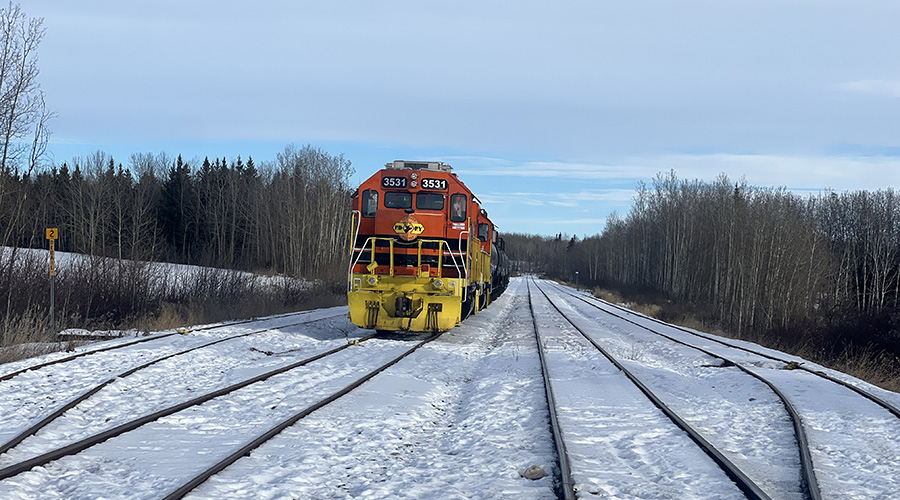Alaska Railroad awaits first-ever autonomous geometry car
4/4/2022
By Jeff Stagl, Managing Editor
The high cost of owning track geometry cars or vehicles is typically prohibitive for regionals and short lines. So, small railroads tend to outsource geometry work and perform traditional track inspections only once a year.
Such has been the case for the Alaska Railroad Corp. (AARC). But that’s going to change.
The regional soon expects to take delivery of an autonomous geometry car housed in an old, 50-foot box car. ARRC received a Consolidated Rail Infrastructure and Safety Improvements Program special transportation circumstance grant from the Federal Railroad Administration that will cover slightly more than two-thirds of the car’s $1.4 million cost, with the railroad paying the remainder.
The big funding boost enabled ARRC to contract ENSCO Inc. to find an appropriate box car and modify it into a high-tech autonomous geometry car at a rail-car shop in Escanaba, Michigan. ENSCO will deliver it to the regional and process data when the car begins to perform track inspections.
The car features track geometry, rail-profile measuring equipment and telemetry devices. Its exterior is painted blue to blend in with the railroad’s passenger train consist.
The unmanned car will measure track position, curvature, gage, alignment, level and other structural features. ENSCO will crunch all the measurement data to identify trends in geometry degradation, gage widening and rail wear, and then share results with ARRC.
The railroad chose to contract ENSCO because the company previously built geometry cars for all the Class Is and the FRA, says Jesse Moose, ARRC’s project manager.
“We looked for expertise to help develop the specifications for the car,” he says. “ENSCO was selected because we considered them the most qualified.”
ARRC workers performed all the set-up and legwork for the geometry car, such as mapping the tracks and track classes. Since Alaska’s cold and snowy weather is hard on rail equipment, the car is designed to operate via three different power sources: head-in power from the locomotive, a diesel generator and solar panels, says Moore.
The railroad had been considering a geometry car acquisition for about 10 years, and continued to monitor technological developments and the rail industry’s transition to autonomous vehicles, says ARRC Maintenance Superintendent Lloyd Tesch.
The biggest advantage of owning a geometry car: the ability to perform track inspections and evaluate data much more often than once a year, he says.
“I think we can do one test a month, but it will be performance-based testing,” says Tesch.
The railroad expects to complete testing more often in spring and summer than in late fall and winter, when freezing occurs. The car will perform tests at speeds up to 60 mph, although it’s rated to test at up to 80 mph, says Tesch.
The car will search for rail defects and unusual geometry to ensure tracks are safe and prevent slow orders, he says.
“The other part is we will get measurements on the rail head,” says Tesch.
All the collected track geometry data will help the railroad better determine its annual rail replacement and tie programs, and surfacing plan. It also will aid in long-range capital planning and preventive track maintenance efforts, says Tesch.
The car now continues on its journey to Anchorage, which involves heading from Escanaba to Seattle, through points in Canada and into Alaska. Delivery was expected in early April, but shipping and logistics issues have caused delays, says Moose.
“We now expect to get the car in the first week in May,” he says.


